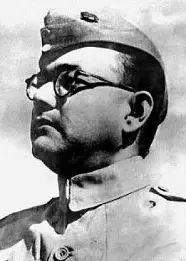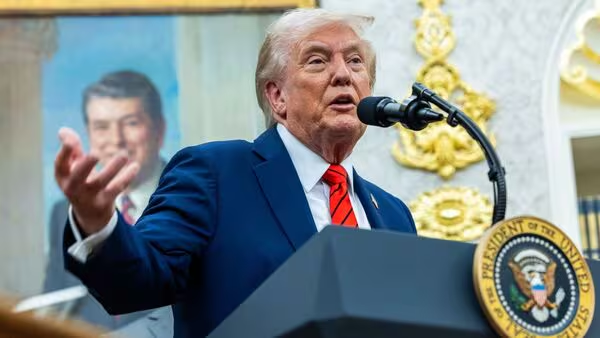
Subhas Chandra Bose, popularly remembered as Netaji, stands as one of the most charismatic leaders of India’s freedom struggle. His journey was marked by immense sacrifices, daring escapes, and an unshakable resolve to see India free from colonial domination. While many leaders of his era sought independence through constitutional or non-violent means, Bose was convinced that only armed struggle and international alliances could secure India’s liberation. His ideology led him to seek support from Axis powers during World War II, including Nazi Germany and Imperial Japan. Among the many dramatic moments of his life, his meeting with Adolf Hitler on 29 May 1942 remains one of the most debated events. Equally, the circumstances of his death in a plane crash in August 1945 and the controversy over his remains stored in Tokyo’s Renkoji Temple continue to stir emotional and political debates in India, even 80 years later.
This article combines two important narratives: Netaji’s controversial meeting with Hitler in 1942 and the ongoing appeal by his daughter Anita Bose Pfaff for the repatriation of his remains to India. By exploring both dimensions, we understand not only Bose’s strategies but also the unfinished story of his final return from exile.
Early Life and Struggle
Born in 1897 in Cuttack, Subhas Chandra Bose was a brilliant student who later became an ICS (Indian Civil Service) officer. However, his nationalist spirit led him to resign from this prestigious post in 1921 to join India’s freedom struggle under Mahatma Gandhi and the Indian National Congress. Bose quickly rose as a leader, admired for his organizational skills, fiery speeches, and uncompromising patriotism. Twice elected as President of the Indian National Congress, his differences with Gandhi’s non-violent approach made him chart a separate path. Bose firmly believed that British rule would not end unless India seized its freedom by force.
The Escape to Germany
In January 1941, Bose made a daring escape from house arrest in Calcutta. Disguised and traveling through Kabul and Moscow, he eventually reached Berlin in March 1941. His aim was to seek Axis support in raising an army from Indian prisoners of war captured by the Germans in North Africa. This led to the formation of the Free India Legion under German command, although it never became a significant force in the war.
The Meeting with Hitler: 29 May 1942
Location and Date
The much-anticipated meeting between Bose and Hitler took place on 29 May 1942 at the Reich Chancellery in Berlin. Some accounts suggest the possibility of Wolf’s Lair, Hitler’s Eastern Front headquarters in Rastenburg, but most reliable sources confirm Berlin as the venue.
Bose’s Objectives
Bose’s main purpose was to secure direct German assistance for India’s independence movement. He wanted Hitler to recognize the Provisional Government of Free India and provide military support to liberate India from British rule.
The Debate and Clash
The meeting was intense and dramatic:
Bose confronted Hitler about his derogatory comments on Indians in Mein Kampf.
He questioned whether Hitler truly considered Indians incapable of self-rule.
Hitler, in response, maintained his racial views and argued that India was not yet ready for independence.
The exchange was sharp, and Bose realized that Nazi Germany’s interest in India was purely strategic, aimed at weakening Britain, rather than genuine support for Indian liberation.
Outcome
The meeting ended in disappointment. Hitler did not offer the scale of support Bose was hoping for. This disillusionment prompted Bose to shift his focus toward Japan, where he found far more willingness to back his cause. Soon after, Bose traveled via submarine from Germany to Japan, where he revitalized the Indian National Army (INA) and launched the slogan “Give me blood, and I will give you freedom.”
Bose’s Turn to Japan and the INA
In Southeast Asia, Bose reorganized the INA, originally created by Mohan Singh. Under his leadership, the INA grew to nearly 40,000 soldiers, consisting largely of Indian prisoners of war and expatriates. Bose also established the Provisional Government of Azad Hind in 1943, which was recognized by several Axis powers. With Japan’s support, INA troops fought alongside Japanese forces in Burma and Manipur, particularly in the Imphal and Kohima campaigns of 1944.
Although militarily unsuccessful, the INA’s efforts had a profound psychological impact on Indians, inspiring nationalist sentiments and shaking the confidence of the British Raj.
Netaji’s Death: 18 August 1945
On 18 August 1945, Bose was reportedly fatally injured in a plane crash in Taipei, Taiwan (then under Japanese rule). He suffered severe burns and died the same day. His cremation took place in Taipei, and his ashes were transported to Tokyo, where they were preserved at the Renkoji Temple. This sudden end sparked countless rumors and conspiracy theories, with some refusing to believe he had died in the crash.
The Question of Netaji’s Remains
Anita Bose Pfaff’s Appeal
In 2025, on the 80th anniversary of Bose’s death, his daughter Anita Bose Pfaff reiterated her longstanding appeal: that her father’s remains, still kept at Renkoji Temple in Tokyo, should finally be brought to India. She described this as Netaji’s “posthumous return from exile.”
The Long Exile
For Bose, exile was one of his greatest fears. Despite his victories and setbacks, he remained separated from his motherland during the last years of his life. Now, nearly 80 years later, his remains too remain in exile, far from the soil of India he loved and died for.
Indian Government’s Stance
Successive Indian governments have hesitated on this matter, citing controversies, differing public opinions, and political sensitivities. While some reports suggest willingness to bring back the remains, concrete steps have not been taken. This has prolonged a chapter of uncertainty in India’s historical memory.
Symbolic Importance
Bringing Netaji’s remains back to India would not only fulfill his daughter’s wish but also symbolically end his exile, giving the nation an opportunity to honor him with the dignity he deserves.
Netaji’s Legacy
Subhas Chandra Bose left behind more than an unfinished mission; he left behind an indelible mark on India’s freedom struggle. His courage, radical vision, and global strategies inspired generations. While Gandhi and Nehru followed non-violent and diplomatic paths, Bose represented the militant spirit of India’s fight for independence. His INA trials in 1945–46 sparked massive nationalist protests, significantly hastening the British decision to quit India.
Conclusion
The story of Subhas Chandra Bose is not just about one man—it is about an entire nation’s thirst for freedom and dignity. His dramatic meeting with Hitler revealed both his boldness and his realism, showing his willingness to challenge even the most powerful dictator of his time. His tragic death and the unresolved issue of his remains remind us that his journey is incomplete. Anita Bose Pfaff’s call for his posthumous return reflects the nation’s unfinished duty: to bring Netaji home.
Subhas Chandra Bose’s life was about defying exile, fighting colonialism, and embracing sacrifice. Ensuring his remains return to India would finally close the circle, allowing him to rest in the land he fought for so fearlessly.






